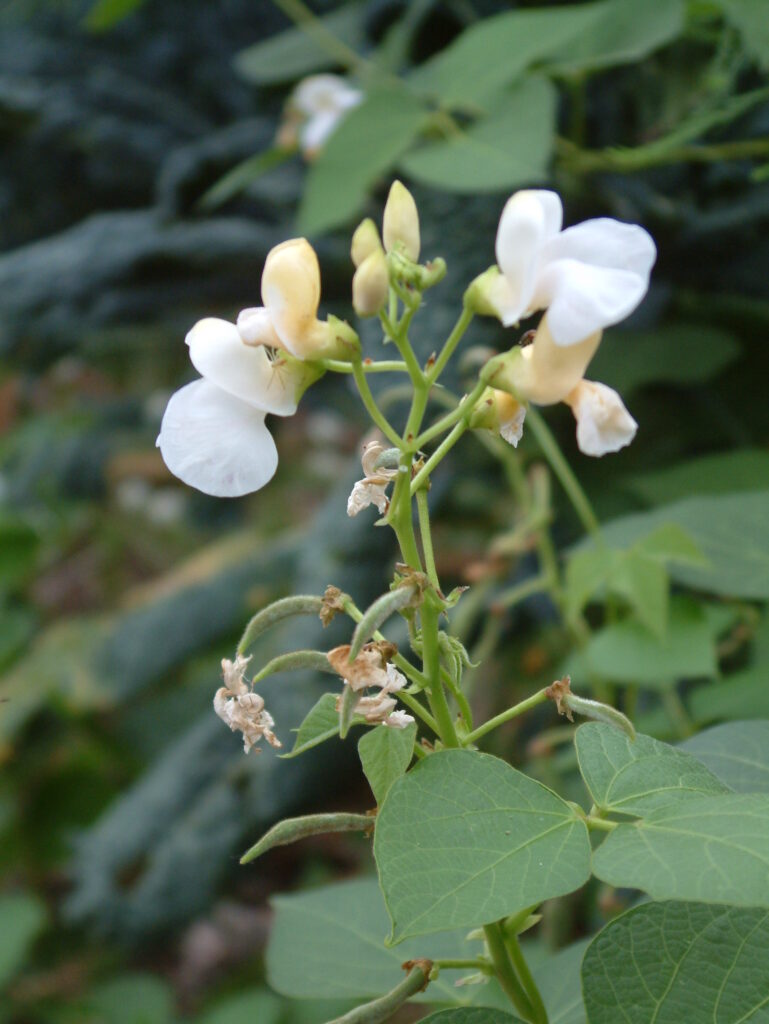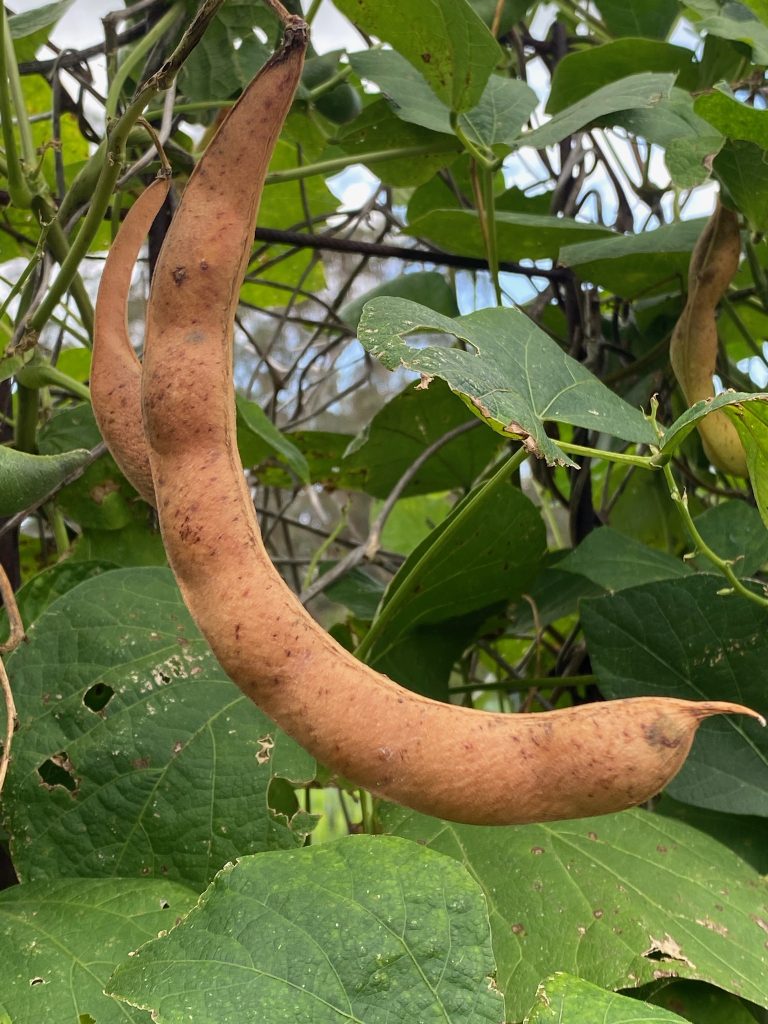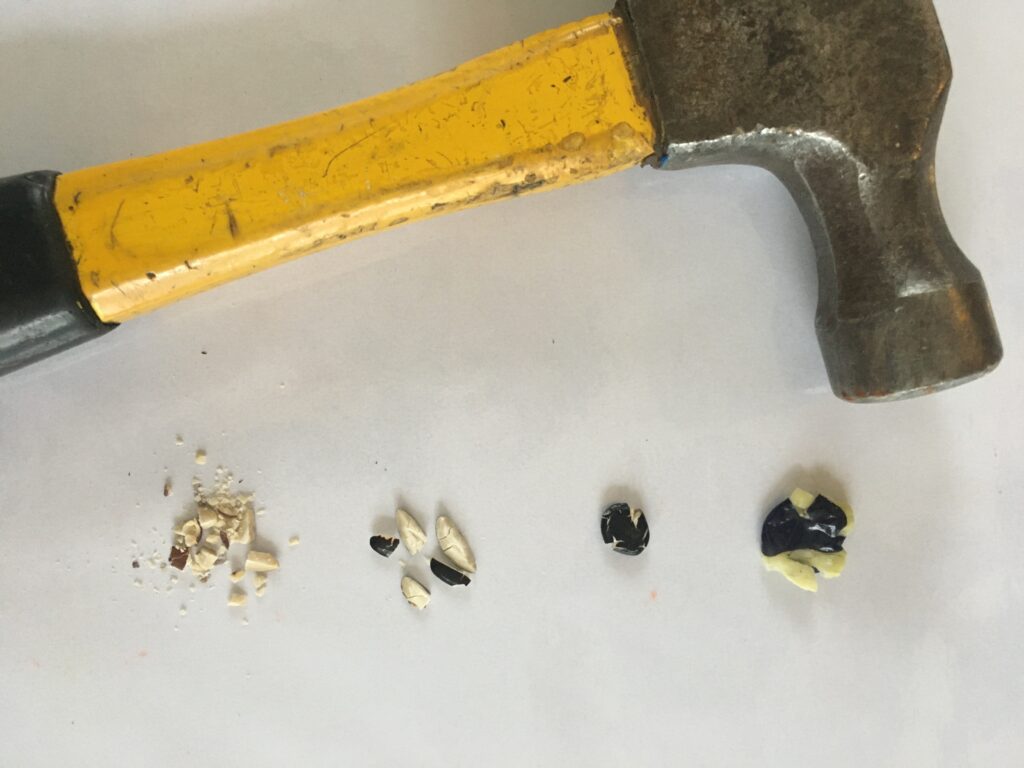Botanical name : Phaseolus coccineus
Common name : Seven year bean
Intermediate difficulty for seed saving
Lifecycle: Tender perennial
Pollination: Self and insect pollinated
Mating system: Perfect flowers
Suggested spacing: Same as for eating production
Seed specific requirements: none
Isolation distance: 30 to 150 m
Population size: 10 or more plants. Viable seed can be saved from a single plant.
Seed maturity: Harvest pods as they turn brown
Processing method: Simply break open pods to access seeds
Expected seed viability: 3 years
Images


Cultivation
Runner beans are not frost tolerant. They are also unlikely to grow well in high humidity and high temperatures. They are grown over summer in southern Australia.
They are available in both climbing forms and semi-climbing forms, sometimes called half runners. Climbing varieties will need a trellis or some other type of support to grow up.
Growing for seed
Runner beans can be cross-pollinated by insects. They should be separated from other varieties of runner beans by at least 30 metres. Up to 150 metres may be required if there are no other flowering plants to distract the insects and seed purity is highly important.
As they can self-pollinate then isolation techniques can be used to ensure seed purity. This may affect the overall yield from the plants.
Selection
Any plants showing disease should not have seed collected from them. Growing a number of plants of the one variety will also allow growers to inspect for any plants that vary from the desired traits and avoid saving seed from those plants.
Growers should check that seed is being harvested from plants which are the correct plant form (flower colour; pod colour, shape and size; and seed colour and size) for what is expected for that variety. Plants that vary from the variety being conserved should not have seed collected from them. Variations aren’t often seen, but we should be aware that they can happen.
Harvest
Seed is mature enough to harvest when the pods turn brown.
Bush or half runner varieties can be harvested when most of the pods have dried off by cutting the entire plant and placing it on a tarp to finish drying. Climbing varieties will likely need each pod to be hand picked from the trellis as it becomes dry enough.
Be vigilant and collect any dried pods before rain. Once beans have dried on the plant, significant rain very easily causes mould to grow on the pods and seeds and these should not then be saved for replanting. If rain is forecast then pods should be collected at the leathery stage and dried under cover.
Processing
Once the pods are dry they can be broken open to get the seeds out. This can be done by hand for each pod. Alternatively the usual methods of walking on the pods or using a threshing machine can be tried. If the seed is dry it is difficult to damage it by threshing. Do not be tempted to try threshing or walking on the plant material before it is dried as the seed could be damaged while it is still moist and soft.
Storage
After processing, it is a good idea to keep the seed either spread out or in a paper bag in a dry location to ensure that any moisture being held in the seed has a chance to dry off. Beans are large seeds and can take a surprisingly long time to dry out fully internally.
Dryness can be tested by hitting a sample bean with a hammer. If it shatters it is dry enough, if it squashes at all then it is still holding moisture. Have a look at our video on dryness if you need more help with this part.

There is a fair likelihood that insect pests will have laid their eggs in or on the seed. To stop them in their tracks one of the easiest methods of control is to freeze the seed for a few days. To do this the seed must be absolutely dry first. Seed will also store for longer if it is fully dry. It then must be placed in an airtight container – like a glass jar – before going into the freezer for 48 to 72 hours to kill pests and their eggs.
Seed is best stored in an airtight container where it is dark, cool and dry.
Other Resources
Contributors
Liz Worth, Nellie Pryke
